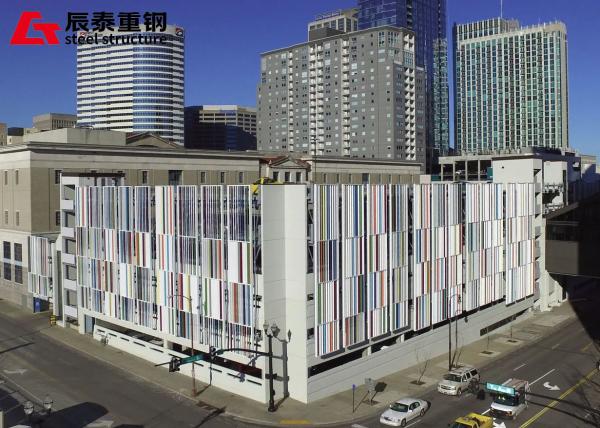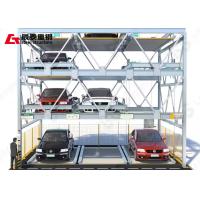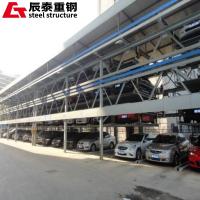Elevated Car Parking Garage Steel Structure Construction Design
Product Introduction
As Nashville's population has soared, so has the multi-story steel
expansion of the city's main library parking lot.
Nashville is one of America's current up-and-coming cities.
Census data shows that the city added nearly 100 new residents per
day in 2018, and the Metropolitan Planning Department estimates
that by 2040 Middle Tennessee will add 1 million new residents.As
the city booms, space (especially parking) in the city center
becomes at a premium.
Due to the surge in business, tourism, and convention traffic (the
city has hosted NASCC: Steel Conference twice since 2008!)), the
Downtown Nashville Partnership and the City of Nashville recognized
the need for more parking and asked structural engineer Gresham
Smith to expand the city's main library parking lot vertically by
three levels.The garage itself is operated by SP+ and maintained by
Block by Block for use by downtown employees, daily visitors to the
library and nearby attractions, and guests of the Renaissance Hotel
across the street.
Because of the site's long history and versatility - having been
the site of Nashville's original synagogue, then a shopping center,
and then the main library (as of 2001) - there is not a lot of
documentation on the site beyond basic floor plans.The structural
team needed to learn as much as possible about the structural
condition of the site before they could determine if a vertical
expansion was feasible, and worked with multiple geotechnical
engineering firms to conduct a multi-phase forensic analysis,
providing enough information at each stage to determine feasibility
before proceeding to the next phase.
During the course of the investigation, the team discovered that
the existing four-story garage had at least three different
structural systems:cast-in-place conventional reinforced concrete
on the first three elevated floors, cast-in-place post-tensioned
concrete on the top floor, and composite structural steel infill on
the roof portion.In addition, the structure appeared to have been
altered at least three times previously.After a year of testing the
site's bedrock, garage foundations, and concrete structure, the
team gathered the information they needed to confidently move
forward with the design of the garage's vertical expansion.
In the absence of existing drawings and on a compact, busy urban
site, the team chose to use structural steel (660 tons in total)
rather than concrete to build the extension.Because structural
steel is much lighter than concrete and has a higher
strength-to-weight ratio, overloading of existing foundations and
structures was avoided.The design utilized a composite floor system
that limited the amount of concrete required, so sections of the
floor could be poured in a single day without worrying about cold
joints.In addition, steel could be used for smaller columns,
resulting in improved interior visibility and driver
circulation.(Typical beams are W30x99, infills are W14x22, and
columns are W14x120, W14x176, and W18x106.) And because the steel
is exposed, it's easier for managers to perform direct inspections
and maintenance.
In terms of protecting the exposed steel structure, the team
considered both painting and galvanizing, ultimately choosing the
latter, which they determined would have the longest life and
lowest maintenance requirements.In addition, the team reinforced
the floor slabs to limit the number of construction joints and
potential locations for moisture intrusion.In addition to mild
steel reinforcement, macrofiber reinforcement,
shrinkage-compensating admixtures, and crystallizing admixtures
were used to reduce the initial shrinkage of the concrete and
minimize cracking.




















